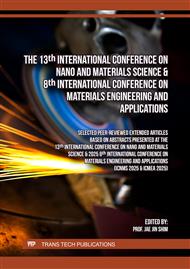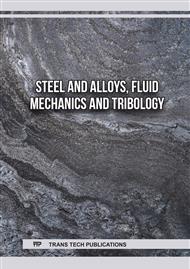p.53
p.59
p.65
p.71
p.79
p.87
p.99
p.107
p.117
Influence of Process Parameters on Microstructure and Mechanical Behavior in Wire Arc Additive Manufacturing of 316L Stainless Steel: A Dual-System Study
Abstract:
This study examines the influence of Wire Arc Additive Manufacturing (WAAM) param eters on the microstructure and mechanical properties of AISI 316L stainless steel, comparing out puts from two different systems: the Fronius TransPuls Synergic 2700 CMT and the Kemppi X5 500 Pulse+. By employing Electron Backscatter Diffraction (EBSD) for microstructural characterization alongside tensile and hardness tests, we investigated how different printing speeds, wire feed rates, and free wire lengths impact the material’s properties. The Fronius system produced parts with a fine, uniform, columnar grain structure, leading to more isotropic mechanical properties. In contrast, the Kemppi system resulted in coarser grains with delta ferrite, increasing ductility but also introducing anisotropy. The geometry and hardness of the parts also showed significant variations, underscoring the critical need for parameter optimization in WAAM to achieve desired material characteristics for specific applications. These findings highlight the importance of process parameter tuning to minimize defects and enhance the consistency and performance of additively manufactured parts.
Info:
Periodical:
Pages:
79-85
Citation:
Online since:
June 2025
Authors:
Keywords:
Price:
Сopyright:
© 2025 Trans Tech Publications Ltd. All Rights Reserved
Share:
Citation:



